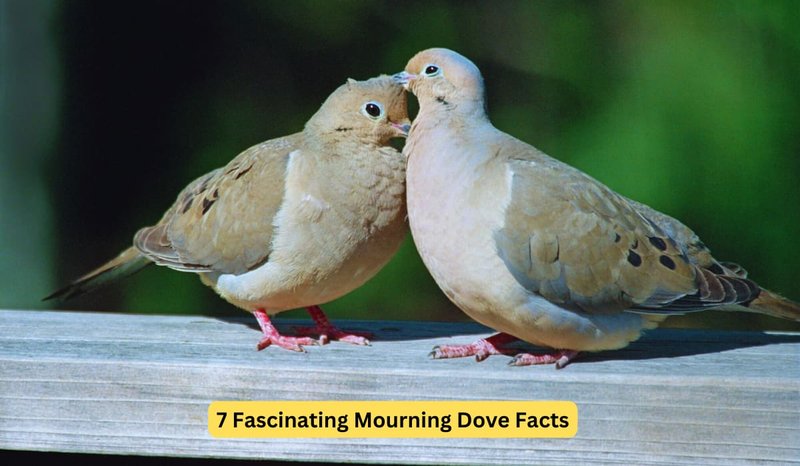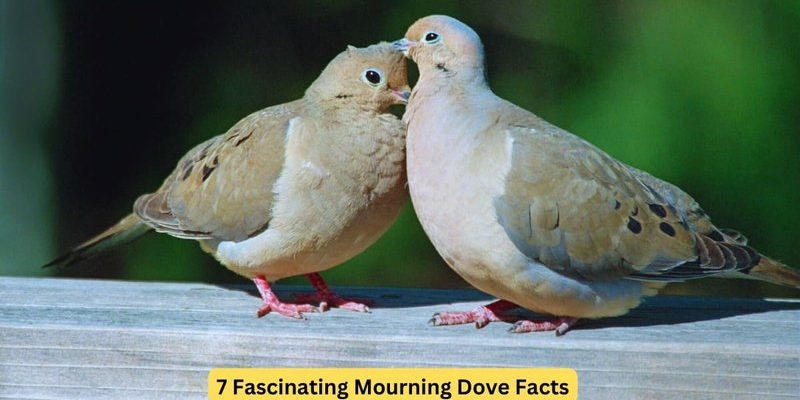
Imagine if every bird had its own story. The mourning dove certainly has one, rich with history and mystery. They’re not just another bird in the sky but rather a symbol of peace and love in many cultures. For those curious about the details of their lives, you’re in for a treat.
1. The Origin of Their Name
You might wonder why these birds are called mourning doves. The name actually derives from their melancholic coos, which can sound like a mournful tune. It’s as if they’re expressing a heartfelt sorrow that resonates with listeners. Many people associate the soft cooing with feelings of tranquility and reflection, making it quite fitting for a bird so often seen alone or in pairs.
Interestingly, the mourning dove’s scientific name is *Zenaida macroura*. This name reflects their classification within the doves’ family. It’s fascinating how a creature’s name can tell us so much about its character and behavior, isn’t it?
2. A Common Sight Across North America
Mourning doves are one of the most common birds in North America, found in a variety of habitats from urban areas to rural fields. You might be surprised to learn that their range extends all the way from Canada to Central America. They adapt well to different environments, which helps explain their widespread presence.
You might spot them sitting on power lines or feeding on seeds scattered on the ground. With their slender bodies and long tails, mourning doves are often mistaken for other dove species. However, their distinctive coloring—soft gray-brown feathers with subtle hints of pink—makes them stand out once you take a closer look.
3. Unique Feeding Habits
Here’s the thing about mourning doves: they’re picky eaters in their own unique way. They primarily consume seeds, which can range from grass and weeds to cultivated grains. Their preference for seeds makes them a common sight at bird feeders, where they flutter around, searching for their next meal.
Although they are usually seen on the ground foraging, mourning doves are quite skilled at using their beaks to peck at seeds. They have a unique way of feeding—often picking up seeds and then dropping them before consuming. This behavior makes it seem like they have a knack for choosing only the best seeds for a delicious meal.
4. Impressive Breeding Abilities
Mourning doves are known for their impressive breeding capabilities. They can produce several broods each year, with the potential to raise up to six young in a nesting season. A typical nest is a simple affair, constructed from twigs and grasses, often placed in trees or shrubs.
Once the female lays her eggs, both parents take turns incubating them. This shared responsibility is quite heartwarming, illustrating the teamwork that’s crucial for their success. You might be lucky enough to witness a pair of mourning doves caring for their young—it’s a beautiful sight.
5. Recognizable Calls and Songs
Have you ever paused to listen to the calls of mourning doves? Their gentle cooing is not just a way to communicate; it’s also a key part of their mating ritual. Males produce a series of soft coos that can attract females, establishing their presence in an area.
Interestingly, these calls can vary in pitch and duration, with some birds developing unique “songs.” It’s almost like they have their own language! Listening closely can reveal the subtle differences between individual birds. If you start paying attention, you might just hear how each mourning dove has its own personality.
6. The Role of Mourning Doves in the Ecosystem
Mourning doves play a vital role in their ecosystem. By feasting on seeds, they help with seed dispersion, which allows plants to grow and thrive. This process keeps the environment healthy and diverse, highlighting the interconnectedness of nature.
Additionally, they serve as a food source for various predators, from hawks to raccoons. This balance in the food chain illustrates how mourning doves contribute to maintaining ecological harmony. It may seem small, but every dove plays a part in supporting the lives of other species within their habitat.
7. Their Remarkable Flight Skills
Mourning doves aren’t just pretty faces; they are also fantastic flyers. Their wings are designed for speed and agility, allowing them to take off quickly and maneuver through tight spaces. When startled, they can reach speeds of up to 55 miles per hour!
You might see them performing rapid aerial displays, where they dart back and forth, showcasing their incredible flying prowess. Their flight is not just functional; it’s a sight to behold, adding to the enchanting nature of these birds.
8. Differences Between Male and Female Mourning Doves
If you take a moment to observe mourning doves, you might notice that males and females have some differences. Males tend to be slightly larger than females and often have a more vibrant coloring, especially around the neck.
However, it can be a challenge for the untrained eye to distinguish between the two. Their subtle differences require a keen gaze. Many birdwatchers find joy in identifying the nuances between genders, making it a fun and rewarding experience.
9. Their Lifespan and Challenges
Mourning doves have a surprisingly long lifespan for such small birds, living up to 5-10 years in the wild. However, they face numerous challenges. Predation, habitat loss, and changes in food availability can significantly impact their populations.
Understanding these challenges helps us appreciate how resilient these birds are. Observing them in nature reminds us of the importance of protecting their habitats so that future generations can enjoy their beauty and gentle songs.
10. Symbolism and Cultural Significance
In many cultures, mourning doves symbolize peace, love, and hope. You might have seen them represented in art or literature, often associated with romantic themes or spiritual meanings. Their soft cooing is often linked to feelings of calm and reassurance, making them cherished by many.
Celebrating the presence of mourning doves in our lives reminds us of the beauty of nature and the connections we share. Whether it’s their songs filling the air or their graceful flights in the sky, they hold a special place in our hearts.
In conclusion, the mourning dove is so much more than just a bird. From their charming songs to their vital role in the ecosystem, these creatures have a way of capturing our attention and admiration. Next time you hear their cooing in the distance, take a moment to appreciate the unique story that each mourning dove carries with it. Their presence adds a bit of magic to our everyday lives, reminding us of the wonders of nature.

